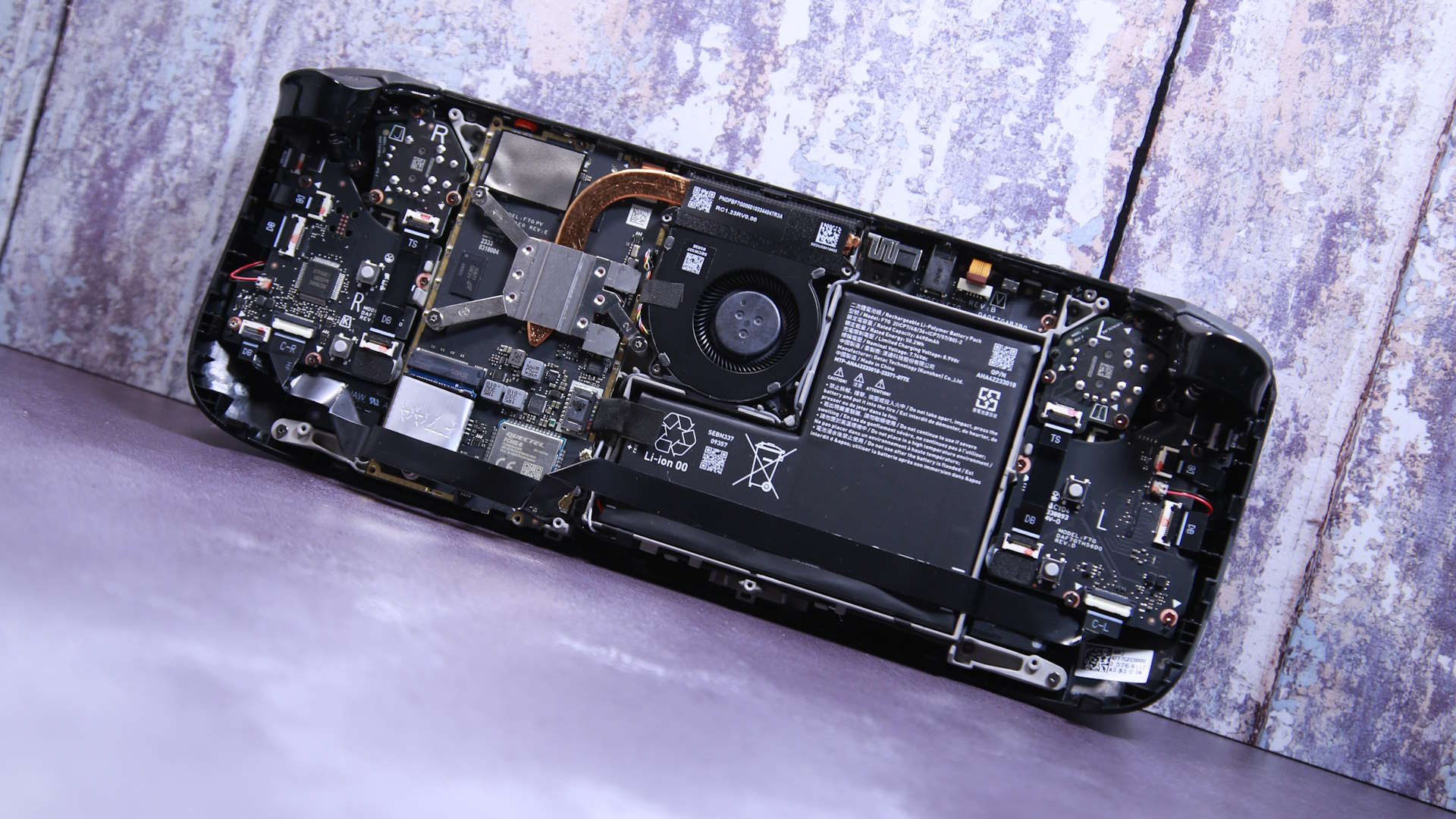The new Steam Deck OLED is here, but while the sparkling screen is the eponymous feature, there’s a whole lot else going on under the hood. Valve has made sure the chassis is identical to the original LCD version, which means all your translucent covers will still be compatible, but things are very different inside.
For a start, it looks a whole lot more professional. It’s almost like the difference between some simple beige box office machine and a proper gaming PC. That’s most obvious in the upgraded fan, which looks like one ripped straight out of a gaming laptop, and helps make this new version far quieter than the standard Deck.
But the mainboard around the new 6nm Sephiroth APU looks a lot more simple, too. Though you can see most of the memory chips are on a different side compared to the LCD version, potentially because there’s more space on the reverse as the OLED panel is thinner and cooler.
One other thing that is quite obvious is the new WiFi 6E module. That’s the big silver chip on the left hand side by the SSD (in its little sleeping bag). You can also see the discrete WiFi and Bluetooth antennae attached to it—Valve says this makes it a lot more straightforward to connect multiple Bluetooth game controllers when you’re playing docked.
(Image credit: Future)
Steam Deck review: Our verdict on Valve’s handheld.
Best Steam Deck accessories: Get decked out.
Steam Deck battery life: What’s the real battery life?
Best handheld gaming PC: What the best travel buddy?
There’s also the bigger 50Wh battery, which is apparently a little thicker than the 40Wh battery of the LCD version. Though, in all honesty, it looks like you could probably squeeze that bigger battery inside the older Steam Deck. Probably.
Though Valve’s Lawrence Yang has said to me: “Because of all these changes and improvements, the parts are not swappable with the Steam Deck LCD unit. We’ll still sell, and make available all Steam Deck LCD internal parts for repairs and replacements. But for the most part, because we changed so much inside, there’s not as much back and forth swapping that’s going to be possible.”
That means you’re not going to be able to get one of the new OLED modules into your old Deck… at least not easily. “I’m sure people will try it, but it’s probably not going to go well,” says Yang.











